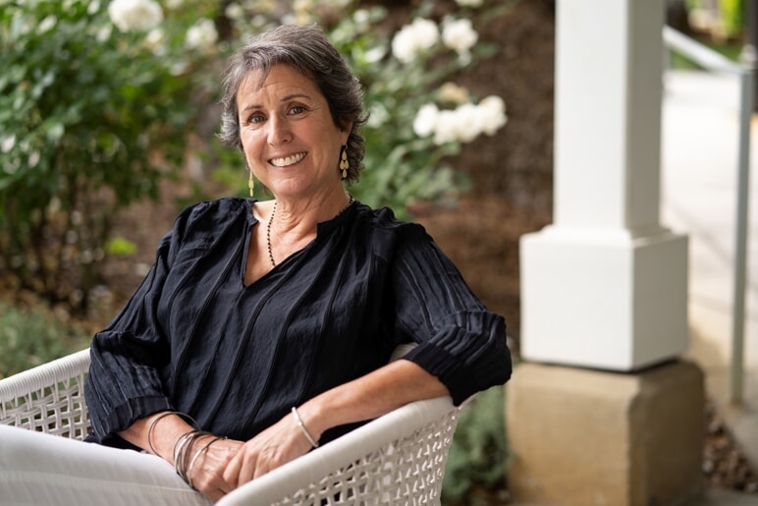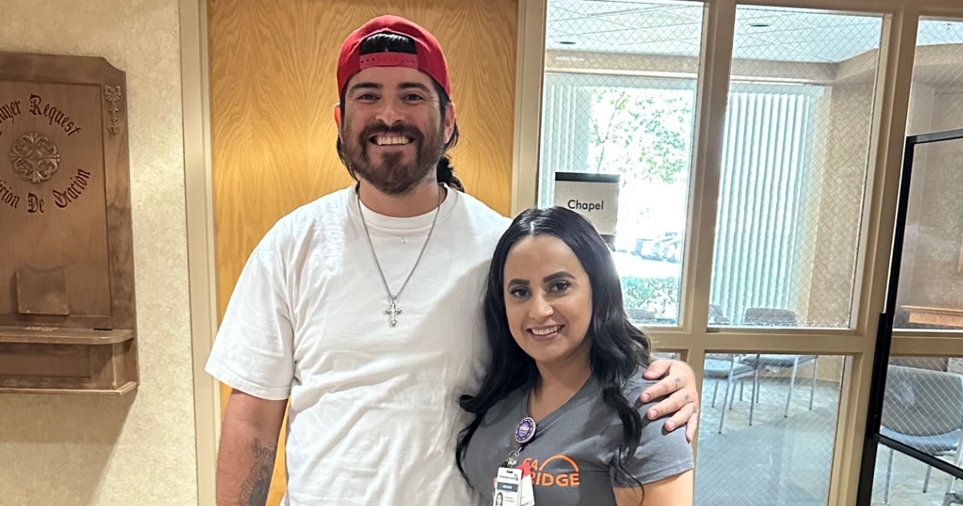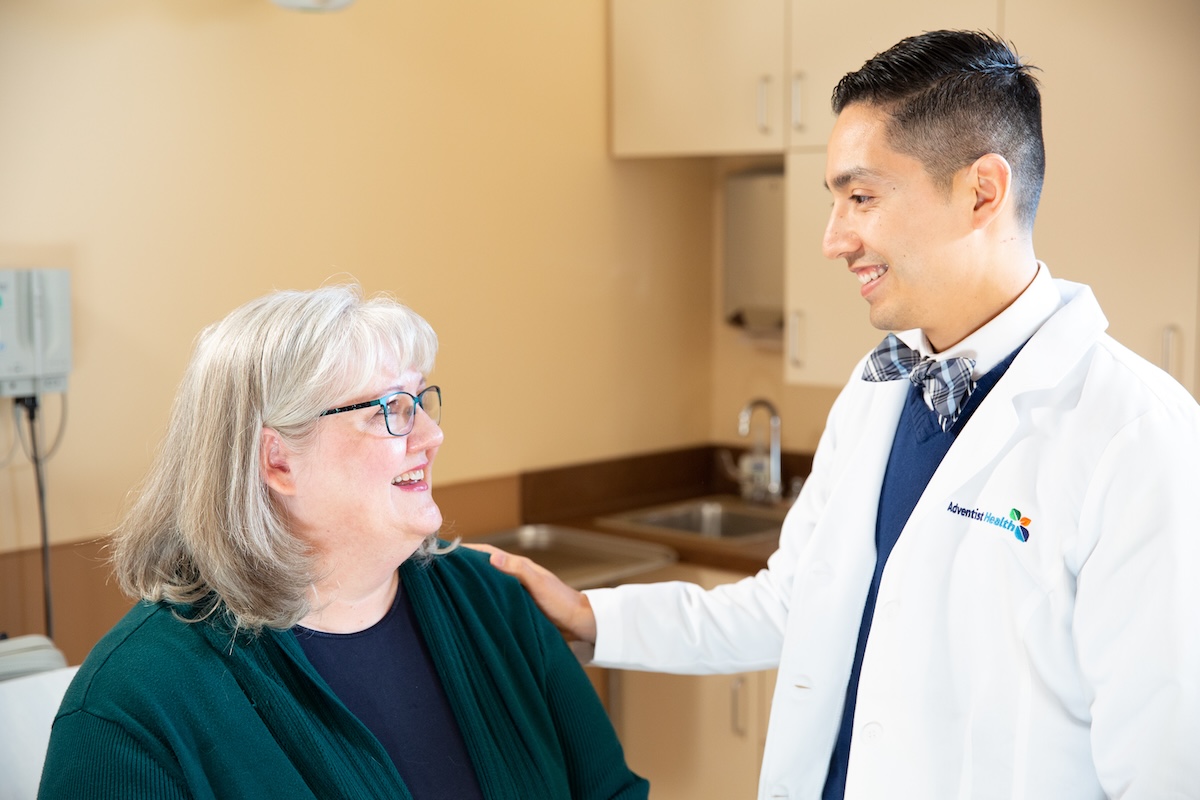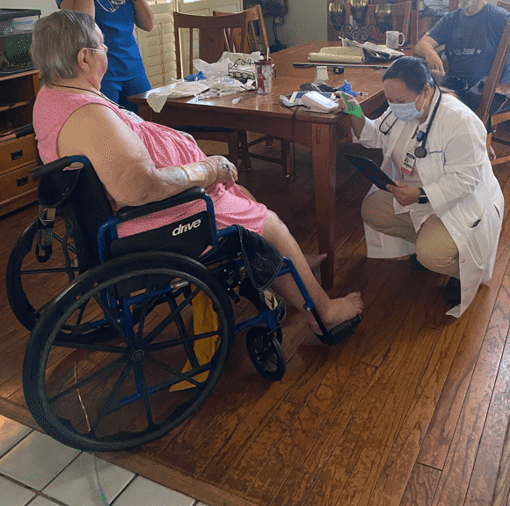Conquering Breast Cancer
Aug 16, 2022

Here’s how one woman survived and thrived after a diagnosis
When Kristi Dunbar told her doctor about a lump she found on her breast, she didn’t think much of it. After all, she had received normal results on a mammogram just four months earlier. After a biopsy, in which her breast tissue was examined for cancer cells, she received the diagnosis: stage 3 breast cancer, which had started to grow and spread.
“When I heard the word cancer, I immediately thought the worst,” she says. “How bad is it? Will I lose my hair? Will I survive? Will my family be OK? So many questions ran through my head.”
One in eight women in the U.S. will develop breast cancer. Knowing the risks and identifying symptoms can lead to early detection, which may have a significant effect on treatment.
Know your risk
Breast cancer starts in the glands, ducts or tissue of the breast, typically in the form of a tumor. Women older than 50 are considered at higher risk for breast cancer, though it can occur in younger women and even men. “My mother and aunt both survived breast cancer,” Kristi says. A family history of breast cancer may increase the likelihood of a diagnosis.
Other lifestyle factors, such as being overweight or obese (especially after menopause) and not getting enough physical activity, can also increase your chances of developing cancer.
Early detection saves lives
Like many women with breast cancer, Kristi’s first warning sign was a lump on her breast. “I knew something wasn’t right,” she says. “It just looked and felt different.” Adventist Health oncologists (cancer experts) recommend that women do routine breast self-exam at home to detect changes, such as lumps.
Care that goes above and beyond
After her diagnosis, Kristi met withAri Umutyan, MD, a medical oncologist. “Dr. Umutyan approached my care specifically for me, not as one-size-fits-all,” she says. “I told him I was concerned about neuropathy — nerve damage to my feet — from chemotherapy, so he listened to my concerns and tailored my treatment approach.”
Breast cancer treatments include surgical removal of the tumor or all of the breast tissue. Oncologists may also opt for chemotherapy, radiation or hormone therapy, which limits hormones that can help cancer cells spread.
When Kristi began her treatment with Dr. Umutyan, he was providing care at a different hospital. However, when he joined Adventist Health in July 2019, Kristi transferred her care there. “I had developed a relationship built on trust with Dr. Umutyan,” she says, “so I followed him when he moved to continue my follow-up care,” which includes regular bloodwork and an estrogen blocker to prevent the growth of cancer cells.
Surviving, then thriving
While undergoing treatment, Kristi says her family and friends were a vital support system. “I joined a group of people who were experiencing cancer, and we would meet for lunch to talk, support one another and give advice,” she says, “and my husband went to every appointment and chemo session with me. He was truly my advocate throughout the process.”
Now that her cancer is in remission, Kristi feels strong enough to go outdoors and exercise more. “My husband and I went to Lake Tahoe and rented Jet Skis a few months after I finished treatment,” she says. “I was speeding through the water with the wind in my face on a beautiful day, and I felt so much joy. I couldn’t stop laughing. For the first time in a long time, I felt so alive.”
Related articles

Valley Man Finds Addiction Healing and Hope at Adventist Health Hanford
July 18, 2023

Celebrating Our Patients’ Gratitude: Recent 5-Star Reviews for Adventist Health Tillamook Providers
May 24, 2024

Patient receives hospital care at home, surrounded by family and field nurses and directed by a physician
July 29, 2020